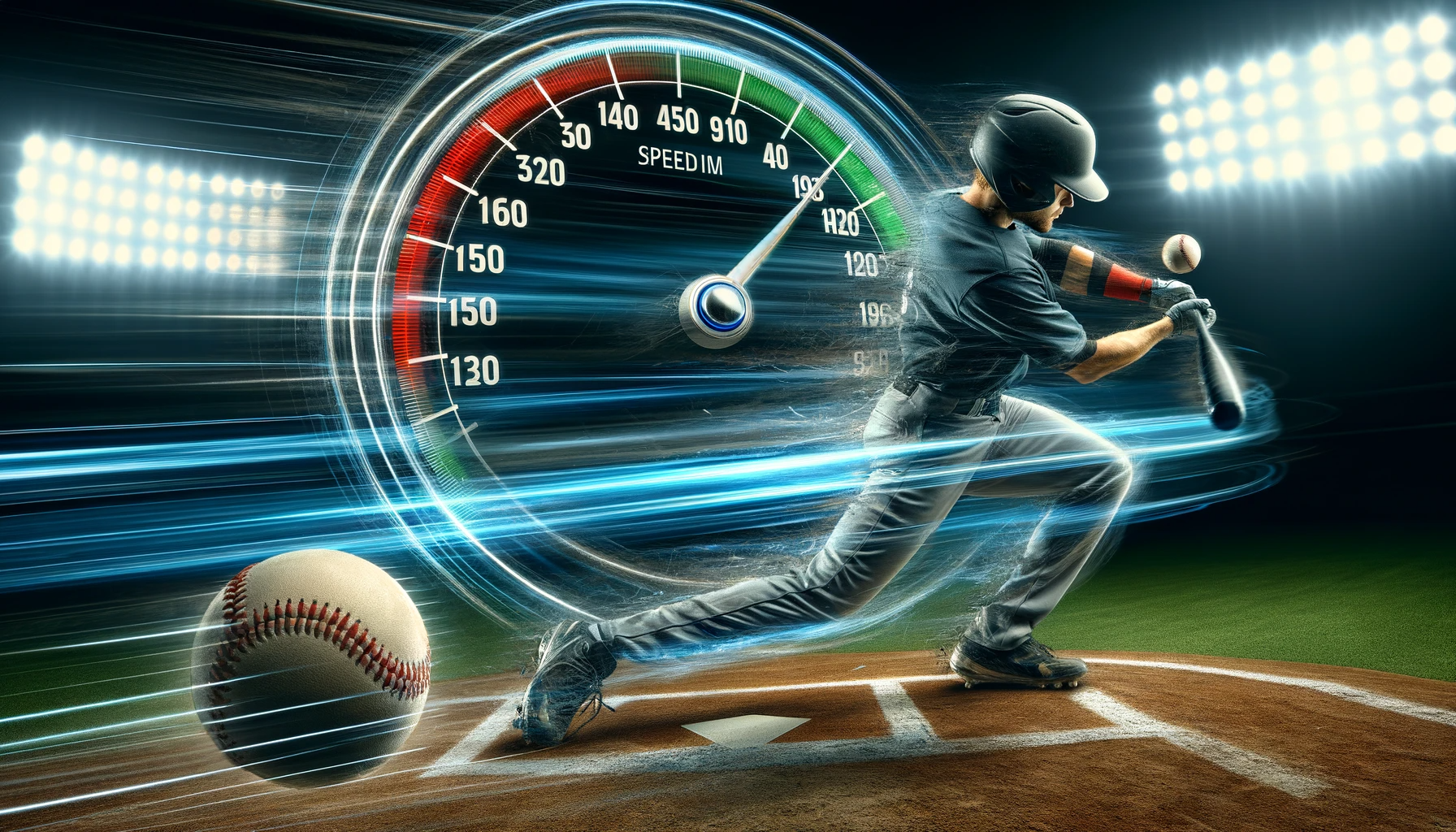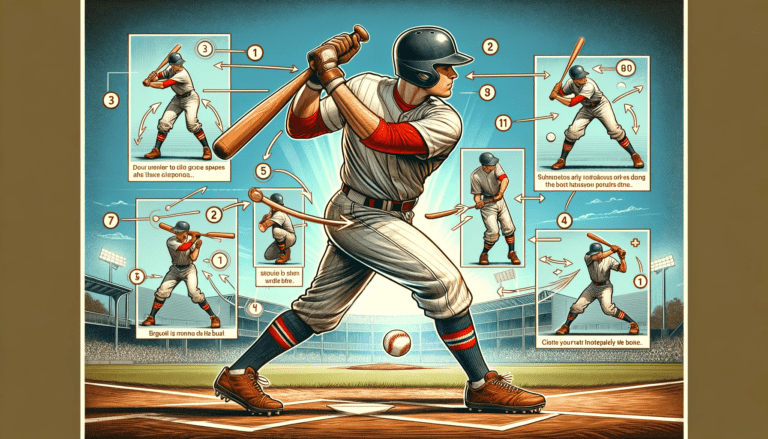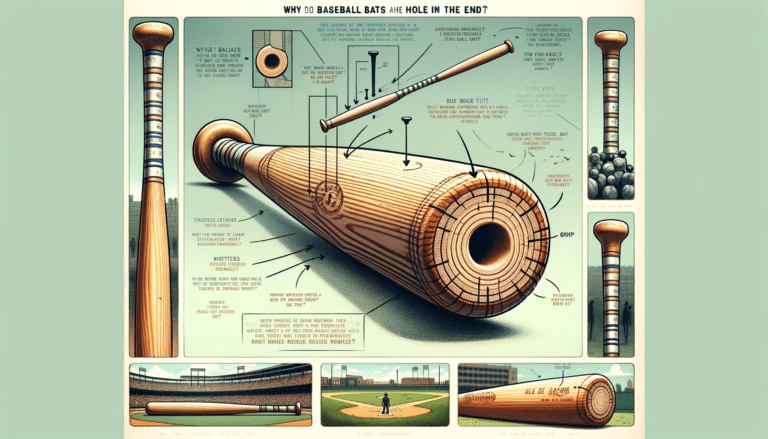How Fast Does a Baseball Come Off the Bat?
Have you ever watched a baseball or softball game and seen a player hit the ball so hard that it just seems to vanish? That speed you’re seeing is all about how fast the ball leaves the bat, or the exit velocity.
In Major League Baseball (MLB), the average exit velocity on a hit ball is around 90 mph, but it’s not uncommon for exit velocities to exceed 100 mph, especially among power hitters.
In this article, we’ll explore the science behind baseball’s high exit velocity, examining the role of bat speed, launch angle, and other variables that impact the ball’s trajectory.
We’ll also discuss the potential risks associated with high-speed projectiles and the measures taken to ensure player safety.
Key Takeaways
- Understanding the role of bat material and the physics of bat-ball collision is crucial for analyzing swing velocity.
- Utilizing innovative equipment and targeted exercises can significantly increase a player’s bat speed.
- Feedback from players and coaches on training aids and techniques provides real-world validation of their effectiveness.
- Mechanics and techniques, such as proper batting stance and kinetic chain movement, are foundational to achieving optimal swing speed.
- Emerging technologies and data integration are revolutionizing the way bat speed is analyzed and improved in player development.
The Science of Swing: Analyzing Bat Speed

The Role of Bat Material in Swing Velocity
The material of a baseball bat plays a crucial role in determining its swing velocity. Wood bats, for instance, are known for their traditional feel and the classic ‘crack’ sound upon impact.
However, modern materials such as aluminum or composite bats offer a lighter weight and increased durability, potentially enhancing swing speed.
When considering the swing velocity, it’s essential to understand the bat’s moment of inertia, which is influenced by its weight distribution. A bat with a lower moment of inertia will be slower and easier to swing quickly.
Here are some key points to consider:
- The density and elasticity of the bat material affect the energy transfer to the ball.
- A lighter bat can often be swung faster, but may not provide the same power as a heavier bat.
- The design and construction of the bat, including its weight distribution, can significantly impact swing velocity.
Ultimately, the choice of bat material should align with the hitter’s strength and hitting style to maximize performance at the plate.
The Physics Behind Bat and Ball Collision
Understanding the physics of bat and ball collision is crucial for players aiming to maximize their hitting power.
The moment of impact is a complex interplay of forces and energy transfer, determining the speed and trajectory of pitched ball through the baseball.
Here are some key points to consider:
- Conservation of Momentum: The total momentum of the bat and ball system before the collision must equal the total momentum after the collision. This principle helps us understand how the mass and velocity of the bat contribute to the ball’s speed off the bat.
- Coefficient of Restitution (COR): This measures the elasticity of the collision, or how much energy is conserved during impact. A higher COR means more energy is transferred to the ball, resulting in greater exit velocity.
- Bat Material and Construction: The design and material of the bat can influence the collision dynamics. For instance, bats with a higher trampoline effect can enhance the ball’s exit speed.
By analyzing these factors, players and coaches can better understand how to optimize bat speed and control the batted ball speed it’s flight after contact.
Measuring Techniques for Bat Speed
Determining the speed of the ball hit a baseball off the bat is crucial for players looking to improve their performance.
One popular method involves the use of radar guns or exit velocity sensors, which provide immediate feedback on the exit speed of the ball after impact.
These devices are often used in conjunction with batting tees and specialized training balls designed to limit flight, such as smash balls, to allow for repetitive practice without the need for a large field.
Another approach is through the analysis of video recordings, where software can track and calculate bat speed.
This technique allows for a more detailed breakdown of the swing, offering insights into the mechanics and timing of the batter.
Additionally, wearable technology has emerged, with sensors attached to the bat or player’s body to gather data on swing dynamics.
- Radar guns and exit velocity sensors for instant feedback
- Video analysis for detailed swing breakdown
- Wearable technology for comprehensive data on swing dynamics
The purpose of these measurements is not only to measure and quantify bat speed but also to understand the factors that contribute to it, such as weight transfer and bat movements.
By examining differences within skilled batters, coaches can tailor training to enhance performance based on visual information and biomechanical analysis.
Read Also: Why Do They Use Aluminum Bats in College Baseball
Training Tools and Techniques to Enhance Bat Speed

Innovative Equipment: From Radar Guns to Smushballs
The quest for increased bat speed has led to the development of innovative training tools that cater to players of all levels.
Radar guns have become a staple in measuring swing velocity, providing instant feedback that is crucial for improvement.
Alongside these, a variety of specialized balls, such as Smushballs, have emerged as effective training aids.
- Smushballs, designed to be smaller than standard baseballs, require hitters to focus more sharply, improving their precision and hand-eye coordination.
- These practice balls are suitable for both indoor and outdoor use, making them a versatile option for year-round training.
- Their unique construction ensures consistent performance, closely mimicking real baseballs, which is essential for accurate practice sessions.
Moreover, Smushballs are known for their wood bat-friendly design. They absorb the impact of the bat, reducing wear and tear and extending the life of expensive equipment.
This makes them a cost-effective solution for players who frequently train with wood bats.
The combination of these innovative tools can significantly enhance a player’s swing speed and overall batting performance.
Drills and Exercises for Increasing Swing Speed
To enhance bat swing speed, a multifaceted approach is essential. Incorporating weightlifting into your routine can be highly beneficial for more bat speed.
Focus on compound movements such as squats, deadlifts, and bench presses to build overall strength. Additionally, wrist curls can be particularly effective in strengthening the wrists, leading to a quicker bat swing.
Here are some drills and exercises to consider:
- Utilize indoor and outdoor training balls for swing concentration drills.
- Practice with limited flight baseballs to refine your hitting technique.
- Employ tools like the Spin Right Spinner Baseball to improve your grip and release.
- Integrate the use of Smushballs for both indoor and outdoor batting practice.
Remember, consistency in practice and the right combination of exercises will lead to noticeable improvements in your swing speed over time.
The Impact of Weighted Bats and Resistance Training
Integrating weighted bats and resistance training into a player’s regimen can lead to significant improvements in bat speed.
Weighted bats, when used correctly, can enhance a player’s swing mechanics and increase their power.
Resistance training, on the other hand, focuses on strengthening the muscles involved in swinging, providing a more forceful and quicker bat through the zone.
Key benefits of incorporating these tools include:
- Improved muscle strength and endurance
- Enhanced swing mechanics and muscle memory
- Increased power and speed of the swing
Players need to use these tools under proper guidance to avoid injury and ensure the most effective results.
A balanced approach, combining both weighted bats and resistance exercises, can optimize a player’s performance at the plate.
Read Also: Why Does Little League Use Aluminum Bats
The Player’s Perspective: Testimonials and Reviews

Real-World Experiences with Training Aids
Baseball players at all levels are constantly seeking ways to improve their game, and one of the most focused aspects is bat speed.
Training aids have become an invaluable asset for players looking to enhance their swing velocity.
A popular resource, BatDigest.com, lists ’15 Baseball Hitting Aids Worth Your Review,’ noting that many are effective when used properly and can be quite affordable.
For instance, the SwingRail Hitting Aid is highlighted as a cost-effective tool for players.
Users of training aids often report significant improvements in their swing mechanics and overall hitting performance.
These aids range from simple, low-tech solutions to high-tech gadgets that provide instant feedback.
Here are a few points gathered from user testimonials:
- Consistent use of training aids can lead to noticeable gains in swing speed.
- Incorporating aids into regular practice routines helps solidify changes.
- The psychological boost from seeing tangible progress cannot be overstated.
While the benefits are clear, it’s important for players to select aids that align with their training goals and to use them as part of a comprehensive training program.
Product Reviews: What Works for Speed Improvement?
In the quest for enhanced bat and ball speed though, players and coaches often turn to the latest training aids and gadgets.
Customer feedback is a critical component in determining the effectiveness of these products.
For instance, the ProVelocity Bat has garnered attention for its ability to train proper swing paths and increase velocity of batted ball, particularly for younger hitters.
- The instant feedback feature of the ProVelocity Bat is frequently highlighted as a favorite among users.
- Reviews suggest that even hitters as young as 12 can benefit from using this tool.
While the market is flooded with options, it’s the real-world results and testimonials that often sway potential buyers.
Products that deliver tangible improvements and are backed by positive reviews tend to stand out in a crowded field.
Professional Insights: Coaches and Players Weigh In
Gaining insights from those who have firsthand experience with improving bat speed is invaluable.
Coaches and players often have a unique perspective on what training aids and techniques truly make a difference on the field.
For instance, the use of training weights like the Ritend Bat Weight has received positive feedback for its effectiveness in enhancing swing mechanics.
- Head Baseball Coach at the University of South Carolina Upstate, Matt Fincher, praises the Ritend Bat Weight, noting, “We love these weights. They create hand path and barrel awareness in the swing.”
This type of feedback underscores the practical benefits of certain training tools, and how they can be integrated into a player’s routine to achieve better results.
It’s not just about the equipment, but also how it’s used that contributes to a player’s development and performance.
Beyond the Bat: The Importance of Mechanics and Technique

Fundamentals of Proper Batting Stance and Grip
Mastering the fundamentals of a proper batting stance and grip is crucial for any baseball player aiming to maximize their swing speed.
A relaxed yet controlled grip is the cornerstone of a powerful swing. The pitcher or bat handle should rest comfortably in your hands, with your fingers loosely wrapped around it, allowing for quick and fluid motion through the swing.
When it comes to stance, balance and positioning are key. Players should stand with their feet shoulder-width apart, knees slightly bent, and weight evenly distributed.
This poised stance enables a swift pivot and explosive power from the legs and hips during the swing.
Here are a few points to remember:
- The bat handle should be loose in your fingers.
- Knuckles should be aligned or slightly rotated, with the ‘knocking knuckles’ of both hands in line.
- The stance should be comfortable, allowing for a full range of motion.
By adhering to these principles, players can lay a solid foundation for developing a faster, more effective swing.
The Kinetic Chain: How Body Movement Influences Speed
Understanding the kinetic chain is crucial for maximizing bat speed in baseball. The kinetic chain refers to the sequence of movements that occur from the ground up, transferring energy through the body to the bat.
Proper alignment and coordination of the body’s segments enable this energy transfer to be both efficient and powerful.
For example, a well-aligned body allows the force generated by the legs and hips to flow smoothly through the torso and into the arms, culminating in a swift and forceful bat swing.
Here are some key components of an effective kinetic chain in a baseball swing:
- Stable footing and leg strength to initiate the swing
- Rotational power from the hips to add momentum
- A strong core to maintain alignment and transfer energy
- Flexible shoulders and arms to whip the bat through the strike zone
By focusing on each link in the kinetic chain, players can enhance their overall swing speed and improve their batting performance.
Common Mistakes and How to Correct Them
Even the most seasoned players can fall prey to common batting mistakes that hinder their performance.
Identifying and correcting these errors is crucial for improving bat speed and overall hitting effectiveness.
Here are the top five batting mistakes and how to address them:
- Over-gripping the bat: This can lead to tension in the arms and slow down your swing. Relax your grip and let the bat rest comfortably in your hands.
- Poor weight distribution: Leaning too far back or forward can throw off your balance. Practice maintaining an even weight distribution throughout your swing.
- Inadequate follow-through: Stopping your swing too early can sap power. Ensure you complete your swing with a full follow-through.
- Incorrect stance: An improper stance can limit your range of motion. Work on aligning your feet, hips, and shoulders correctly.
- Timing issues: Swinging too early or late affects contact quality. Use soft toss and tee drills to refine your timing.
By addressing these issues, you can boost confidence and performance at the plate.
Remember, consistent practice and attention to technique are key to making lasting improvements.
Conclusion
When we look into how fast a baseball moves after it’s hit, we get into all the details about gear, helpful training stuff, and what players think.
Using cool training tools like the Spin Right Spinner and Smushballs shows we know the game’s tough parts. People who buy these things say good gear helps them play better.
Also, the new tech in baseballs that don’t go too far, like how they’re good for both practice and making sure your gear lasts longer (especially bats made of wood), shows we’re always trying to make the game better.
In the end, when we talk about how high school fast a ball goes after being hit, it’s not just about how strong you are.
It’s about how well players get ready, how gear keeps getting better, and how everyone keeps working hard to improve baseball.
Frequently Asked Questions
What factors affect the speed of a baseball off the bat?
Several factors influence the exit velocity of a baseball, including the bat material, the batter’s swing speed, the point of impact on the bat, the pitch speed, and the mechanics of the batter’s swing.
How is bat speed measured?
Bat speed can be measured using various techniques such as high-speed cameras, radar guns, and wearable swing analyzers that capture data during the swing.
Can using weighted bats improve swing speed?
Weighted bats can be used as a training tool to enhance swing speed by strengthening the specific muscles used in batting and improving the batter’s kinesthetic sense.
What are Smushballs, and how do they help in training?
Smushballs are limited flight practice balls designed to reduce wear on bats and mimic the behavior of real baseballs, allowing for safe and effective indoor and outdoor training.
What should a proper batting stance and grip look like?
A proper batting stance involves a balanced and comfortable position with feet shoulder-width apart, knees slightly bent, and weight evenly distributed. The grip should be firm but relaxed, with the hands aligned and the knuckles of both hands forming a straight line.
How can emerging technologies enhance player development in baseball?
Emerging technologies like swing diagnostics, predictive analytics, and data integration can provide detailed insights into player performance, tailor training programs, and improve decision-making in coaching strategies.







